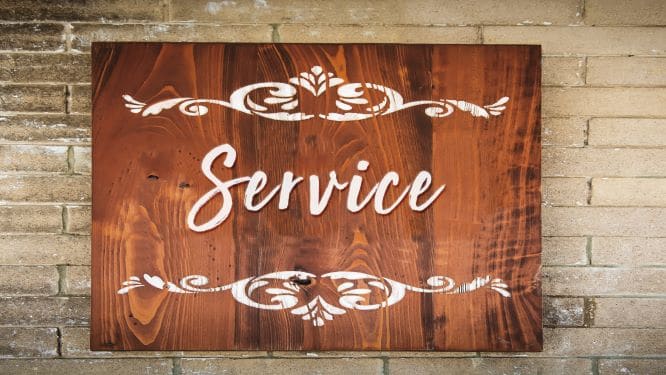Understanding Commercial and Non-Developmental Items: A Comprehensive Guide

In the world of federal acquisition, two terms often come up: Commercial Items and Non-Developmental Items (NDIs). These terms, defined in Part 2 of the Federal Acquisition Regulation (FAR), play a significant role in government procurement processes. Let’s delve into what these terms mean and their implications.
Commercial Items: A Closer Look
A commercial item, as per FAR, is a product or service typically used by the general public or non-governmental entities for non-governmental purposes. These items encompass a broad range of products and services.
Commercial items include products offered for sale, lease, or license to the general public. These items have a commercial sales history, are listed in catalogs or brochures, have an established price, and have distributors. The Department of Defense (DoD), for instance, purchases commercial items like transport aircraft, computers, medicine, and fuel. It’s important to note that the commercial market is global, and commercial items are not confined to the domestic commercial market.
Additionally, commercial items include products that have evolved due to technological advancements or performance improvements and will be available in the commercial market in time to meet the solicitation’s delivery requirements. These could be product updates, model changes, or product improvements such as new versions of software.
Products that have undergone minor modifications to meet DoD requirements also fall under commercial items. The modification should not significantly alter the product’s non-governmental function or essential physical characteristics. The value and size of the modification and the comparative value and size of the final product are considered when determining if a modification is minor.
Commercial items also include products created by integrating commercial subsystems and components into a unique system. For example, a computer system composed of commercial subsystems or industrial plant equipment that combines commercial components into a unique item based on customer needs would be considered a commercial item.
Furthermore, commercial items include products developed at private expense and sold competitively in substantial quantities to state and local governments. Examples include protective vests used by police departments and rescue equipment used by fire and rescue units.
Services procured to support a commercial product, such as installation services, maintenance services, repair services, training services, and other related services, are also considered commercial items. Standalone services offered and sold competitively, in substantial quantities, in the commercial marketplace based on established catalog or market prices for specific tasks performed under standard commercial terms and conditions also fall under this category.
Lastly, a Non-Developmental Item, if determined by the procuring agency to have been developed exclusively at private expense and sold in substantial quantities, on a competitive basis, to multiple State and local governments, is considered a commercial item.
Non-Developmental Items (NDIs): An Overview
Non-Developmental Items (NDIs), on the other hand, are products developed exclusively for governmental purposes. NDIs include defense products previously developed by U.S. military services or defense agencies of U.S. allies and used exclusively for governmental purposes by Federal agencies, state or local governments, or a foreign government. For example, the mechanical dereefer (a mechanism for releasing parachute reefing lines) used with the U.S. Army’s cargo parachutes was developed for and first used by the Canadian Army. Another example is the use by other U.S. military services of trucks developed by the Army.
NDIs also include items that require only minor modifications to meet the requirements of the procuring agency. For example, the Army’s M-119 Howitzer was a modified version of the British Light Gun.
Continuing our exploration of Commercial and Non-Developmental Items, let’s delve into products that are fully developed and in production but not yet sold and in use. These items present an opportunity for the Department of Defense (DoD) to leverage the latest product developments and new technologies. However, they also pose some risk due to the lack of a performance history. Despite this, their potential benefits often outweigh the risks, making them a valuable asset in the procurement process.
For further guidance on buying Commercial Items and Non-Developmental Items, the DoD has provided a document known as SD-2, DoD Acquisitions Buying Commercial Items and Non-Developmental Items. This document serves as a comprehensive guide for understanding and navigating the complexities of these procurement categories.
Commercial-Off-The-Shelf Items
Now, let’s address a common question: Is a commercial-off-the-shelf (COTS) item the same as a commercial item? The answer is no. The definition of a COTS item, as per Part 2 of the FAR, is much narrower than that of a commercial item.
A COTS item is a product, other than real property, that is customarily used by the general public or non-governmental entities for purposes other than governmental purposes. It is sold in substantial quantities in the commercial marketplace and is offered to the Government, under a contract or subcontract at any tier, without modification, in the same form in which it is sold in the commercial marketplace. It’s important to note that COTS does not include bulk cargo, such as agricultural products and petroleum products.
Conclusion
In conclusion, understanding the nuances between Commercial Items, Non-Developmental Items, and COTS is crucial for anyone involved in government procurement processes. Each category has its unique characteristics and requirements, and knowing these can greatly aid in making informed procurement decisions.


